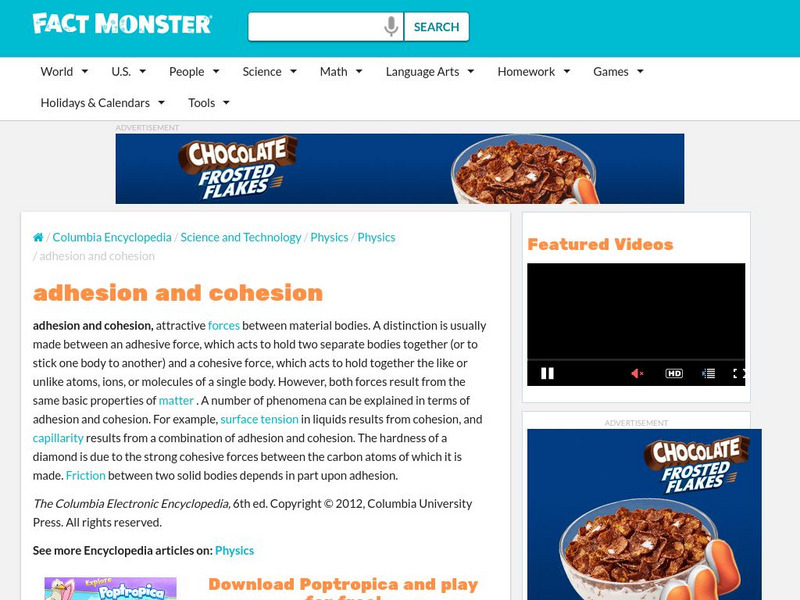SMART Technologies
Smart: Physical and Chemical Properties
Students will learn the difference between physical and chemical properties of matter.
SMART Technologies
Smart: States of Matter
This review of matter includes properties, volume, length, mass, and states of matter. Activities, games, and a Monster Quiz are include.
Science and Mathematics Initiative for Learning Enhancement (SMILE)
Smile: Physical and Chemical Changes
This lesson plan focuses on the difference between physical and chemical changes of matter.
HotChalk
Hot Chalk: Lesson Plans Page: Science Lesson on Water
This activity will teach students about the three states of water found on our planet: solid, liquid gas. They will learn to distinguish the differences between these states and will be able to give examples of each.
Museum of Science
The Atoms Family
Let this classic family of monsters guide you as you learn about energy. Interactive exercises, experiments, and demonstrations help to build knowledge and raise questions.
Fact Monster
Fact Monster: Malleability
The physical property of malleability is explained. The importance of malleability to various physical processes is discussed. Examples of materials with high malleability are identified.
Fact Monster
Fact Monster: Adhesion and Cohesion
The forces of adhesion and cohesion are compared and contrasted. Various phenomena which can be explained by such forces are identified and discussed.
Mocomi & Anibrain Digital Technologies
Mocomi: Structure of an Atom
An atom is made of three parts - protons, neutrons, and electrons. Here you can explore these different parts.
Mocomi & Anibrain Digital Technologies
Mocomi: Nuclear Fission and Nuclear Fusion
Nuclear fission and nuclear fusion are reactions that convert matter into energy. Learn the difference.
Mocomi & Anibrain Digital Technologies
Mocomi: Pure Substances and Mixtures
Defines matter, substances, and mixtures and gives examples.



